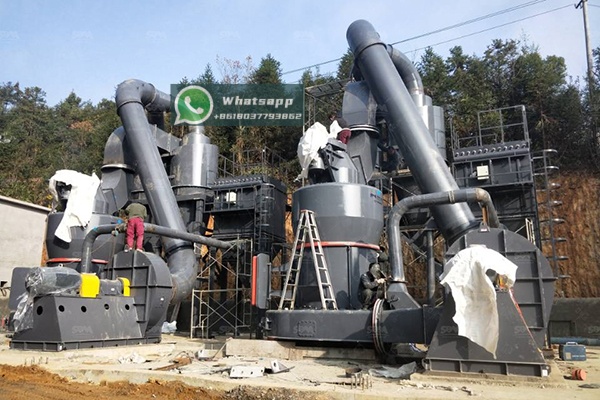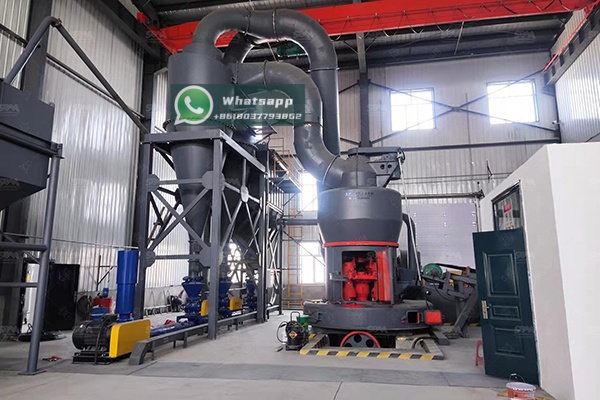Raymond mill systems represent one of the most established and reliable technologies in the field of industrial powder processing. Understanding the material flow through such a system is crucial for optimizing performance, ensuring product quality, and maximizing operational efficiency. This article provides a comprehensive analysis of the journey raw materials undertake from feed to final product within a Raymond mill circuit.
A typical Raymond Mill system is more than just the grinding mill itself; it is an integrated circuit of interconnected components working in harmony. The primary units include:
The entire process is a closed-circuit, negative-pressure air-swept system, which is key to its efficiency and dust-free operation.

The journey begins with the raw material, which must be pre-crushed to a specific maximum size (typically between 20-30mm, depending on the mill model). This material is stored in a feed hopper. A vibrating feeder or screw conveyor, often equipped with a variable speed drive, then meters the material at a controlled and consistent rate into the inlet of the Raymond mill. Consistent feeding is paramount; fluctuations can lead to mill overload, reduced efficiency, and inconsistent product fineness.
Upon entering the mill housing, the raw material falls onto a rotating grinding ring. Spring-loaded grinding rollers, which revolve around their own axes and also gyrate with the rotation of the main shaft due to centrifugal force, roll against the grinding ring. The material is crushed and ground between the rollers and the ring.
Simultaneously, hot air is introduced into the mill from the air heater (furnace). This hot air serves two vital functions:
The heavier, unground or coarse particles remain on the grinding ring until they are crushed to a size small enough to be lifted by the air stream.

This is arguably the most critical stage for determining final product size. The air-powder mixture rising from the grinding zone enters a classifier mounted directly on top of the mill. Modern Raymond mills often use high-efficiency impeller or cage classifiers.
The classifier rotor spins at an adjustable speed. The centrifugal force generated by this rotation rejects coarse particles. These rejected particles fall back down the mill housing onto the grinding ring for further comminution. This continuous return of oversize material is what makes the system a closed-circuit grinder, significantly improving energy efficiency compared to open-circuit systems.
Only the fine particles that meet the fineness criteria (i.e., particles small enough that the air drag force overcomes the classifier’s centrifugal force) pass through the classifier blades and exit the mill housing. The fineness of the final product is directly controlled by adjusting the speed of the classifier rotor: a higher speed yields a finer product.
The fine powder-laden air exiting the classifier is transported through pipes to a cyclone collector. The cyclone uses centrifugal force to separate the bulk of the powder (typically over 85-90%) from the air stream. The powder spirals down the walls of the cyclone and is discharged through a rotary airlock or double-flap valve at the bottom. This valve is crucial as it maintains the system’s negative pressure by preventing air from being sucked in from the atmosphere. The collected powder is the final product, ready for packaging or further processing.
The air exiting the top of the cyclone still contains a significant amount of ultrafine dust. To meet environmental standards and maximize product yield, this air is directed into a baghouse filter or a pulse-jet dust collector. Here, fabric filter bags capture the remaining fine particles. Cleaned air is then drawn through an induced draft (ID) fan and exhausted into the atmosphere.
The ID fan is the engine of the air system. It creates the negative pressure that pulls the air and material through the entire circuit, from the air inlet at the heater, through the mill, classifier, cyclone, and baghouse. The fan’s power and the system’s airtightness are essential for maintaining stable material flow.

A poorly designed material flow path can lead to numerous operational issues, including:
While the traditional Raymond Mill is a robust machine, modern grinding demands higher efficiency, finer products, and greater reliability. Shanghai Zenith Machinery Co., Ltd., an excellent manufacturer of ore grinding equipment, has made great achievements in the field of ultra-fine powder grinding. For operations seeking to upgrade their Raymond mill system or invest in a new, high-performance grinding circuit, Zenith offers advanced solutions that optimize the entire material flow process.
For clients looking for a modern, high-capacity replacement for traditional Raymond Mills, we highly recommend the MTM Medium-Speed Grinding Mill. It adopts world-leading powder processing technology and features an upgraded structure for higher efficiency and energy-saving production.
| Model | Ring roll number (pcs) | Max. feed size (mm) | Output (t/h) | Main unit motor power (kW) |
|---|---|---|---|---|
| MTM100 | 4 | <25 | 3-8 | 37 |
| MTM130 | 5 | <30 | 6-11 | 75 |
| MTM160 | 6 | <35 | 9-22 | 132 |
For applications requiring ultra-fine powders, the LUM Ultrafine Vertical Mill is an exceptional choice. It integrates grinding, drying, classifying, and transportation in a single, compact unit. Its intelligent control system ensures optimal material flow and easier maintenance, producing products with a high content of end-fines.
| Model | Main machine power (kW) | Capacity (t/h) | Size distribution D97 (μm) |
|---|---|---|---|
| LUM1525 | 220-250 | 1.6-11.5 | 5-30 |
| LUM1632 | 280-315 | 2.0-13.5 | 5-30 |
| LUM1836 | 355-400 | 2.3-15 | 5-30 |
The material flow in a Raymond mill system is a elegantly engineered, continuous process of grinding, classification, and collection. A deep understanding of each step—from the controlled feeding to the final filtration—is essential for operators to troubleshoot issues, optimize parameters, and achieve peak performance. By leveraging modern equipment from specialized manufacturers like Shanghai Zenith Machinery, industries can significantly enhance this material flow, leading to greater productivity, superior product quality, and reduced operational costs.